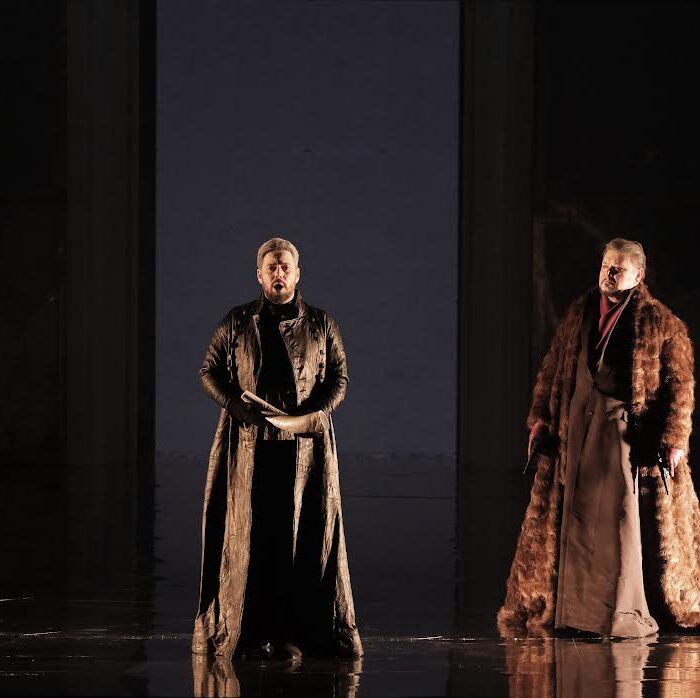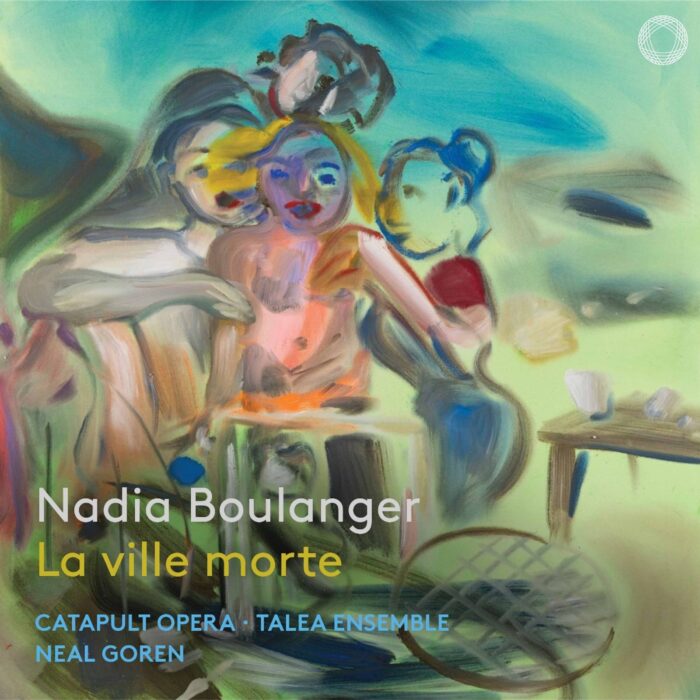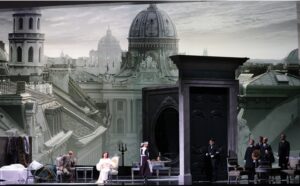
Teatro alla Scala 2023-2024 Review: Der Rosenkavalier
By Bernardo Gaitan(Photo: Brescia e Amisano © Teatro all Scala)
Austrian writer Hugo von Hofmannsthal confessed that he drew inspiration for “Der Rosenkavalier’s” libretto from Molière’s comedies, weaving them together with the roles of Italian commedia dell’arte.
He wrote, “The characters were there, performing right in front of us: the Buffoon, the Old Man, the Young Man, the Lady, the Cherubino… Each needs the other, not just in this world, even if it’s only metaphorically… It’s immediate and eternal.” To this ingenious story, Richard Strauss added world-class music, turning the title into one of the 20th century’s most iconic operas, an extraordinary example of the fusion of music and drama.
After the success of his previous works like “Salomé” (1905) and “Elektra” (1909), characterized by expressive and dramatic intensity, “Der Rosenkavalier” premiered to equal acclaim in January 1911 at the Semper Opera in Dresden. This opera represented a true turning point in Strauss’s career and in the world of German opera. With an unmistakable style and a delicate balance of irony, nostalgia, and philosophical reflection, it marked a significant evolution in Strauss’s musical style.
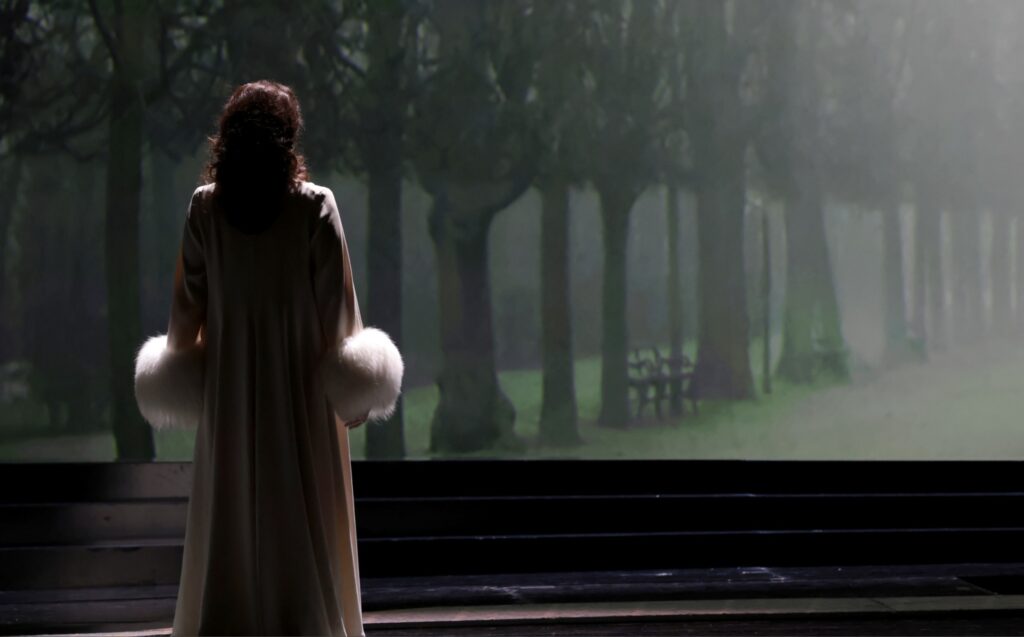
Production Highlights
For this production, La Scala entrusted the musical reins to a Strauss expert: Kirill Petrenko, who made his highly successful debut at the theater. The celebrated Russian-Austrian conductor offered a lyrical and refined language, energizing the obvious influences of the Viennese waltz and elegant 18th-century dances. Petrenko delved into every facet of the work, maintaining a perfect balance between rhythm and emotional depth. Strauss’s dense and complex orchestration electrified the audience thanks to the experienced baton of the current director of the legendary Berlin Philharmonic, with its rich and detailed sound texture. Under his direction, the Orchestra of La Scala achieved an exceptional sound performance, with clear colors and a wide range of nuances, from the overwhelming energy of the waltzes to the most melancholic orchestral moments.
Set in the sumptuous surroundings of 18th-century Vienna, the opera combines the Viennese atmosphere of the 18th century with a very modern musical language. La Scala’s staging was by the recently deceased Harry Kupfer, revisited for this production by Berlin-based Derek Gimpel. Kupfer’s extraordinary combination of fun and melancholy elements in this version remains relevant and highly functional.
The sparse yet elegant and minimalist set design was by Austrian Hans Schavernoch, who alternated suggestive black-and-white images of a historically inaccurate aristocratic Vienna created by artificial intelligence. Jürgen Hoffmann‘s sober but effective lighting created an effect of nobility and great class in the first two acts. Meanwhile, Yan Tax‘s costumes pay homage to early 20th-century fashion, just as Strauss and Hofmannsthal would have dressed.
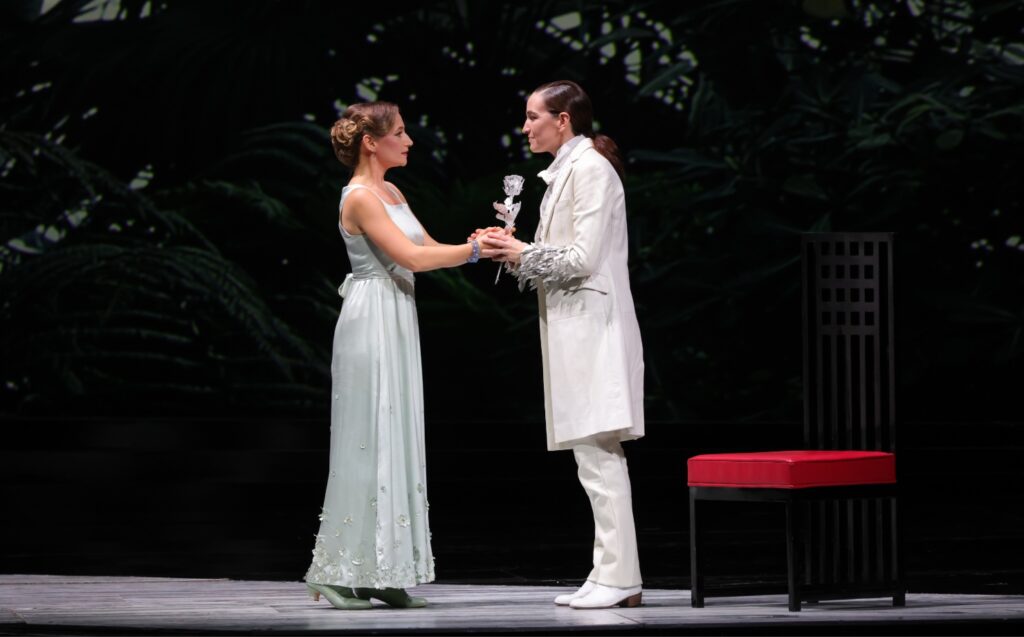
Illuminating Cast
“Der Rosenkavalier” may appear to have a rather crude plot, but beneath its lightness revolving around a classic love triangle, there lie deep reflections on the passage of time, love, and renunciation.
The Marschallin, a mature woman who reflects on the melancholy of inevitable aging and lost love, was sublimely interpreted by Krassimira Stoyanova. The Bulgarian soprano’s performance is one of the most intense female portraits in the operatic repertoire. Stoyanova portrayed the Feldmarschallin with elegance and refinement, demonstrating great experience in the role. With her excellent musicianship and solid technique, she offers us a performance with a warm and enveloping voice, coupled with an enviable breath.
Günther Groissböck‘s assured and likable Baron Ochs von Lerchenau was equally well executed by the Austrian bass, who boasts impeccable and clear German diction. With a powerful middle register, a long-lasting high register, the ability to carry a child while singing, and his excellent comic timing, he is a fantastic performer of the role.
Without a doubt, a glorious moment was the beautiful trio at the end of the opera where Stoyanova was joined by American soprano Kate Lindsey and Sabine Devieilhe as Octavian and Sophie, respectively. Lindsey, with a warm and assured voice, captivated the audience with the role of the also-called Quinquin, always in style and with a good phrasing, not to mention her fine masculine acting. Devieilhe, for her part, offered a sweet, innocent, and pure Sophie. The French soprano’s fresh voice and candid interpretation earned her a resounding round of applause at the end of the show.
Piero Pretti, as “the Italian tenor,” deserves a special mention. His voice has a dreamy brilliance. The aria “Di rigori armato il seno” was legendary thanks to his powerful and graceful timbre. The other characters, all great performers, contributed positively with vitality in their interpretations.
It was a splendid evening where all the protagonists were greeted with thunderous applause for Lindsey and Devieilhe, even more enthusiastic for Groissböck and Stoyanova, and a long standing ovation for Petrenko closed the grand night.


